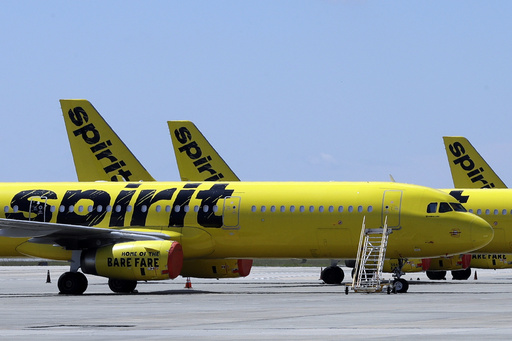
Spirit Airlines is taking significant steps to address its financial challenges by implementing job cuts and selling a portion of its aircraft. This move comes as the budget airline grapples with ongoing economic difficulties and an unpredictable future, leading it to pursue cost-cutting measures totaling approximately $80 million. These efforts, which will commence early next year, are set to primarily involve a reduction in its workforce, though the airline has not disclosed the exact number of layoffs or the positions affected.
In a recent filing, Spirit announced its plan to sell 23 aircraft to GA Telesis, an aviation services firm, for around $519 million. The planes involved in the transaction are Airbus A320ceo and A321ceo models manufactured between 2014 and 2019. Deliveries of these aircraft are scheduled to begin this month and continue through February. GA Telesis has expressed enthusiasm about the deal, stating that it will substantially enhance its fleet capabilities. Meanwhile, Spirit anticipates that the proceeds from the sale, combined with the discharge of associated debt, will boost its liquidity by $225 million through the end of 2025.
Although Spirit’s shares experienced a 25% increase, reaching $3.01 during midday trading on Friday, they are still down over 80% compared to the previous year. The airline has encountered multiple hurdles in recent years, struggling to return to profitability despite a rebound in travel following the COVID-19 pandemic. Rising operational costs and increased competition from rival airlines, which have attracted some of Spirit’s price-sensitive customers with their own low-cost offerings, have exacerbated the situation.
The consequences have been severe, with Spirit suffering over $2.5 billion in losses since early 2020. The airline also grapples with significant debt obligations, facing payments that exceed $1 billion. In its most recent filing, Spirit projected a 20% decrease in capacity for the fourth quarter compared to last year, along with an expected mid-teen percentage decrease in capacity for 2025. This decline in capacity is attributed to the current aircraft sales, as well as the previous removal of certain planes from service due to supply issues with Pratt & Whitney GTF engines.
Speculation regarding potential bankruptcy has arisen, as Spirit’s financial troubles make it a target for acquisition. JetBlue previously sought to acquire Spirit, but the deal collapsed when a federal judge blocked the merger over antitrust concerns earlier this year. Meanwhile, Frontier Airlines, which had also tried to merge with Spirit, was outbid by JetBlue. Recent reports suggest that Frontier is exploring the possibility of making a renewed offer, as outlined by sources familiar with the talks. If a deal materializes, it may involve Spirit restructuring its debt and liabilities, possibly amid bankruptcy proceedings.
In summary, Spirit Airlines is actively seeking ways to stabilize its finances through workforce reductions and aircraft sales, while navigating an increasingly competitive and challenging market landscape. The future remains uncertain, with ongoing discussions concerning potential merger opportunities and restructuring efforts. The company has chosen not to comment further on its discussions with bondholders or prospects of bankruptcy.
